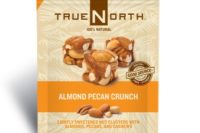Brand Treasures
By Mary Ellen Kuhn
The candy category boasts some of the packaged goods industry’s real brand gems — classic, time-tested and with a wealth of history behind them. What are the secrets to preserving the promise of these cherished brand icons while keeping them contemporary?
Hershey’s
Kisses will celebrate their 100th birthday on July 7, 2007. M&M’s
Chocolate Candies made their debut in 1941 and gained popularity among
World War II GIs, who enjoyed having the melt-resistant candies included in
their rations. Topps’ Bazooka bubble gum has been around since the
1930s. And that most classic of marshmallow confections, Peeps, celebrated
its 50th birthday in 2003.
Far from showing signs of age, these brands are
vibrant and healthy, clearly in their prime. And they’re not alone.
Even the briefest of strolls down a candy aisle demonstrates that the
category boasts a true treasure chest of celebrated, iconic brands.
Thus it’s not a bit surprising that consumers
have formed some strong relationships with candy brands. Consider Russell
Stover’s 94-year-old Whitman’s Sampler brand. In recent brand
personality research, consumers spoke fondly of Whitman’s, describing
the Sampler as “a good friend,” among other descriptive
phrases, reports John O’Hara, Russell Stover vice president of
advertising and public relations. There are approximately 200 Internet fan
sites for Peeps. And the M&M’s brand enjoys 100 percent consumer
awareness.
But as life experience demonstrates, all relationships
require nurturing. So in this special report, we focus on some of the keys
to preserving and protecting the luster of the candy category’s brand
treasures. We also asked some experts to share their brand preservation
commandments.
Certainly, capitalizing on brand power isn’t a
slam dunk, particularly in today’s environment of economic
instability, where brand loyalty has waned among some anxious consumers.
“Brand loyalty can be correlated with
socio-economic status,” says Elise Neils, managing director of
Intangible Business LLC, Milwaukee, Wis., a branding consultancy.
“Middle- to upper-class consumers are just as loyal today as in the
past, while those with lesser incomes are not as loyal as they were in the
past.
“Cost savings is a greater determining factor in
purchases currently than in the past because a greater percentage of people
are in the lower-middle and lower-class, who are feeling inflation and the
slowed economy at this point,” Neils observes.
Consider as well the sheer volume of products crowding
the marketplace. In 2005, more than 3,500 new candy products flooded the
category, according to Datamonitor’s ProductscanOnline. So while
product differentiation is a helpful component in establishing brand power
(See sidebar, “Brand Differentiation Dissected”), it is harder
than ever to achieve.
“Twenty years ago it was possible to
differentiate yourself on your attributes, but that’s
evaporated,” says Simon Sinek of New York City-based Sinek Partners,
a strategic marketing consultancy.
In this challenging climate, the following
commandments from Sinek and other branding pros deserve some serious
consideration.
Know your brand. Never
forget what your brand is about. Sinek offers this shorthand for getting to
the heart of a brand’s personality. It’s all about the
following two questions: What do you do? And why should I care?
“Those that can answer the second question are
those that have a clear sense of their brand personality,” Sinek
stresses.
Honor your consumers.
Brands are defined by “what the audience perceives. [They’re]
not necessarily about what the company is trying to say,” says Beth
Barbee, president of Darwin, a Denver-based brand strategy company.
“If you look at the most powerful brands in the
world — Disney, Starbucks, Apple — they are 100 percent
consistent with their loyal customers,” says Sinek. Purchasers of Apple computer and electronics products are
“people who want to challenge the status quo,” for example,
says Sinek.
Joe Villiano, assistant brand manager for Marshmallow
Peeps at Just Born, Inc., says the core audience for Peeps is something the
company keeps firmly in mind, even as it has moved to extend the brand via
new products and licensed merchandise. “Obviously, we wouldn’t
extend ourselves to something that’s not family-friendly,” says
Villiano. “It involves looking at who the current consumers are
(parents and kids are the core) and seeing what kinds of products work for
them.”
Nurture the emotional connection. A substantial 70 percent of a consumer’s reaction to a
brand is emotional, calculates Robert Passikoff, Ph.D., president of Brand
Keys Inc., a New York City-based brand and consumer loyalty consulting
company. Passikoff developed a proprietary system of psychological inquiry
to help marketers understand what consumers really think about their brands
(vs. what they say they think).
Passikoff paraphrases management guru Peter Drucker.
“Peter Drucker said either innovate or have loyal customers,”
Passikoff relates. Because true innovation is relatively rare, it is
critical to have an understanding of “the emotional bond that exists
between your brand and your consumer.”
Russ Meyer, chief strategy officer at the San
Francisco office of brand consultancy Landor Associates, explains that how
consumers feel about a brand is what helps differentiate it from other
brands.
Jack Gordon, chief executive officer of
Cincinnati-based Acupoll Research Inc., a new product research and testing
company, agrees. “I’ve done a lot of work with new and
established brands,” says Gordon, a former Procter & Gamble
executive. “And it’s always been my opinion that it’s the
emotional appeal that causes consumers to bond with the brand.”
Be true to your brand. To
preserve brand integrity, it’s important not to stray from the
essence of the brand. “Your brand can only stand for one thing
ever,” Sinek asserts. “As soon as you start adding products
that stand for something different, you’ll damage the brand.”
“Don’t try to position yourself in a way
that is fundamentally what you’re not,” Gordon cautions. If you
do, he warns, “Your equity starts eroding very quickly.”
The current fixation on the obesity issue is a case in
point. The attention the issue is getting has tempted some candy makers to
focus on health messages. But such an approach may lack authenticity.
“I think it’s disingenuous,” says Sinek. “Just
because there’s a trend for healthiness doesn’t mean that
everyone wants everything that they take into their body to all of a sudden
be healthy.”
Stay in touch with your brand personality. “The brand personality should stem from the brand
essence,” says Darwin’s Barbee. “For example, for a brand
like Hershey, which is a large and well-established brand, the brand has a
certain stability — the power and strength of being a long-time
player in the category — that probably would not make it appropriate
to do something wacky and irreverent,” says Barbee.
“With a brand like Nestlé’s Wonka,
however, that brand is all about being offbeat and fun and risk-taking and
whimsical,” she observes. “That brand can take bigger brand
risks because the brand personality implies that it’s just a little
more out there.”
In addition, all the elements of a brand —
it’s packaging, advertising and the product itself — should
work together and should reflect the brand personality.
Barbee cited Target’s own-label Choxie chocolate
as an example of a confectionery product that loses touch with the brand
personality. Language on the packaging suggests that the chocolate is
upscale, notes Barbee. But, she adds, “I didn’t think that the
packaging conveys that it is high-end. Even the name Choxie doesn’t
sound very upscale or sophisticated. I think there is a disconnect.”
Keep your promises. Walter
Landor, founder of Landor Associates, gets credit for the classic
observation that “a brand is a promise.” And to protect a
brand’s integrity, the promise must not be broken.
“The thing that you have to be careful of, I
think, is over-promising,” says Acupoll’s Gordon. “Think
about McDonald’s and it’s repositioning as a more healthful
product line in the early ‘90s. They started positioning themselves
in a way that was fundamentally not believable.”
Donatella Giacometti, chief brand officer of Ten
Second World Inc., a New York City-based brand company, agrees with the
promise premise. “If you’re promising that it [a candy bar] is
30 percent bigger, it better really feel bigger and be flagged in that
way,” she says. “So that everything that the consumer has come
to expect is checked off the list. And then you have a shot [of marketplace
success]. If you mess up on any of those things, then there’s a
problem.”


